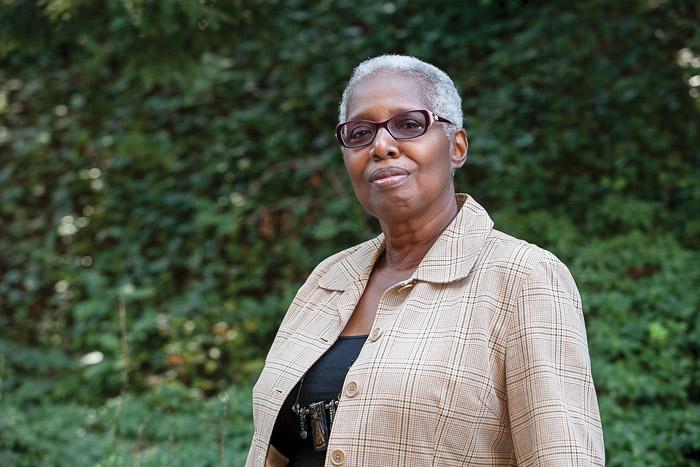Our View: Creating a Caring Community

Photo by Carl Socolow '77.
Joyce Bylander, vice president and dean of student life
The academic year has opened with energy and enthusiasm. We welcomed 619 first-year students, 15 transfers and our first exchange student through our newest partnership with the Eco League consortium of schools. During Orientation it was wonderful to walk around greeting so many of the incoming students and their families. With the arrival of returning students, my calendar has been filled with appointments to catch up. Many students want to share all that they did over the summer or during their year of study abroad. Their stories are amazing, their growth clearly evident.
It also is gratifying to see the change in the makeup of the incoming class since I began here 16 years ago. This class is more racially and ethnically diverse, religiously diverse, inter-nationally diverse and regionally diverse than any previous cohort of Dickinson students. That is just the diversity we can see. From talking with students, we will discover so much more.
Our commitment to all of these young people is a community that helps them become Dickinsonians. We want them to become independent thinkers and actors in this place, and to do so we must provide the right level of challenge and support.
To that end, we made some significant changes this year that will help our students jumpstart their Dickinson careers. First, we brought back Pre-Orientation to give students a chance to meet some of the excellent individuals with whom they will share their lives. The programs included outdoor adventures in West Virginia, Pine Grove Furnace and Laurel Lake. Others provided students with the opportunity to dive into community service and to learn about the diversity of Carlisle and the region. Students also got a taste of campus activities through theatre programs, WDCV and the Idea Fund.
Second, we changed the class dean system so that rather than all 619 students having the same first-year dean, each of our incoming students have been assigned to one of seven individuals who will be committed to their success over the next four years. We already have seen the difference: When students have felt the tension or anxiety of adjustment, they’ve reached out to their college dean. When parents have had concerns about their child’s adjustment, they’ve reached out to us as well. Our ability to have caring adults touch base has been helpful in making a successful transition to college.
And finally, we had the good sense to create First-Year Interest Groups (FIGs). These FIGs are coordinated by upper-level students who applied for this yearlong commitment to new students because they want each of them to find their place at Dickinson. What’s great about these 43 individuals is that all of their Dickinson journeys are different. Some have loved this place from the moment they stepped on campus during the search process. Some got here and thought, “What was I thinking?” Others have worked hard at finding their place here. But every one of these FIG mentors calls Dickinson home now, and they are poised and ready to help new students find their place here and begin to call it home.
I believe that relationships are at the heart of the liberal-arts experience and that community is actively created. I have had the importance of our restructuring reaffirmed by a recent book on higher education that repeats what many of us believe to be true: In How College Works by Daniel Chambliss, the author writes that entering and belonging are two of the most important tasks students must do to maximize not just their social but also their intellectual experience. “[G]ood people, brought together in the right ways, we suspect are both necessary and perhaps even sufficient to create a good college,” he writes. “In one sentence: What really matters in college is who meets whom, and when.”
We have been intentional about the communities we have created. We have been extremely thoughtful and careful in the selection of our residential-life staff, first-year mentors, our caring campus adult mentors and our alumni mentors. We have optimized the environment for interaction. This is critical to helping students connect and be able to focus on their true intent for being here—achieving a world-class education.
Read more from the fall 2014 issue of Dickinson Magazine.
Learn More
Published November 5, 2014